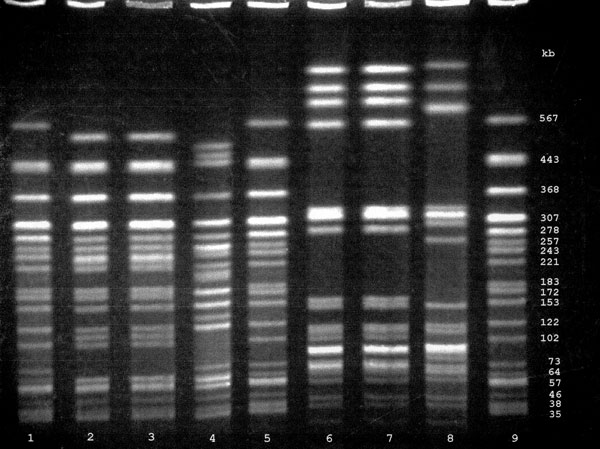Volume 8, Number 5—May 2002
Dispatch
Deer Meat as the Source for a Sporadic Case of Escherichia coli O157:H7 Infection, Connecticut1
Figure

Figure. Pulsed-field gel electrophoresis of O157 isolates from the Connecticut child and the deer meat showing XbaI and BlnI-digested genomic DNA. Lanes 1, 5, and 9 are Escherichia coli G5244, a standard strain used to characterize molecular size; lanes 2 (XbaI) and 6 (BlnI) are digests from the child’s O157 isolate, lanes 3 (XbaI) and 7 (BlnI) are digests from the deer meat O157 isolate, and lanes 4 (XbaI) and 8 (BlnI) are digests from an unrelated O157 patient. Numbers at right are molecular sizes (in base pairs).
1Presented in part at the International Conference on Emerging Infectious Diseases, Atlanta Georgia (abstract # 118), July 2000.
Page created: July 15, 2010
Page updated: July 15, 2010
Page reviewed: July 15, 2010
The conclusions, findings, and opinions expressed by authors contributing to this journal do not necessarily reflect the official position of the U.S. Department of Health and Human Services, the Public Health Service, the Centers for Disease Control and Prevention, or the authors' affiliated institutions. Use of trade names is for identification only and does not imply endorsement by any of the groups named above.